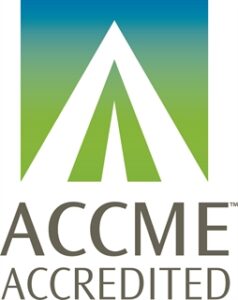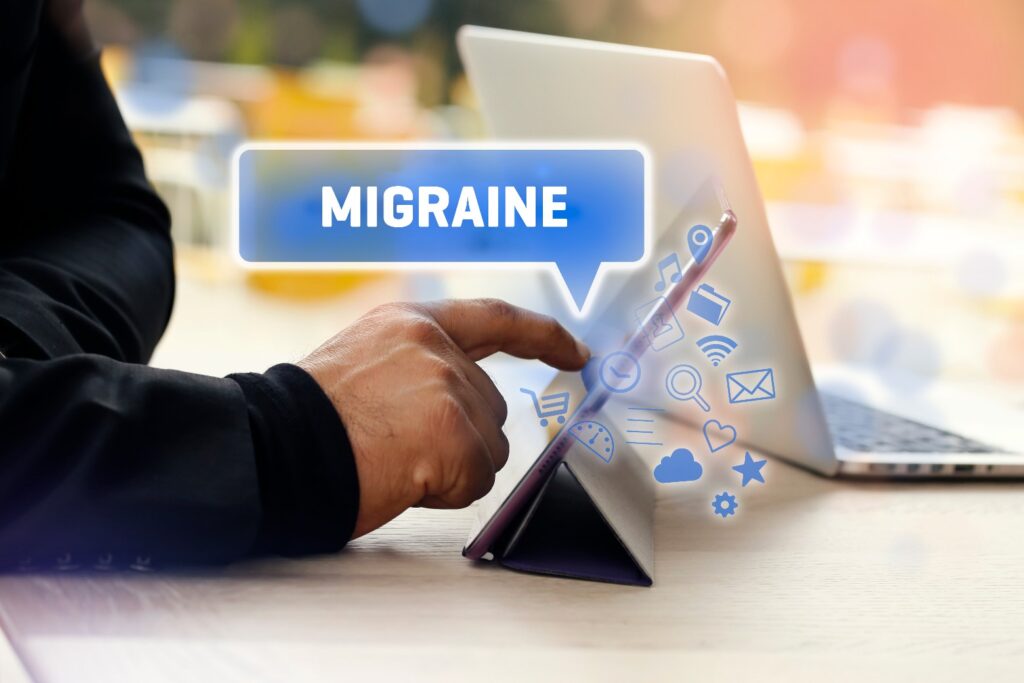Disclaimer
This video case has been developed with the assistance of Dr. Shannon Babineau (Atlantic Health System, NJ, USA). This program was supported by an independent medical education grant from Theranica Bio-Electronics Ltd.
The information presented is not intended as medical advice. Responsibility for patient care resides with the healthcare professional on the basis of their professional license, experience, and knowledge of the individual patient.
For full prescribing information, including indications, contraindications, warnings, precautions, and adverse events, please refer to the approved/cleared product labeling. Please note that products may have different labeling according to geographical location; within the United States, full prescribing information is available from the US Food and Drug Administration (fda.gov).
All characters and events depicted in this patient case simulation are entirely fictitious. Any similarity to actual events or persons, living or dead, is purely coincidental. This activity is intended only for healthcare professionals registered to practice in one of the following countries: Austria, Czechia, Denmark, Finland, France, Germany, India, Israel, Italy, Norway, Poland, Russia, Slovakia, South Africa, Spain, Sweden, Switzerland, United Kingdom, United States of America. To proceed, please confirm that you are a healthcare professional practicing in one of these countries.
Introduction
Migraine is a very common and disabling condition affecting millions of children and adolescents worldwide.1, 2 Globally, almost 10% of children and adolescents experience migraine, with 1–2% having chronic migraine.1, 2 Adolescents with migraine miss more school than their peers and face impairments in school performance, leisure/social activities, family relationships, and overall quality of life.2Learning Goal/Purpose
The goal of this activity is to increase HCP knowledge and competency in evidence-based diagnosis and treatment strategies for adolescents with migraine, with a focus on the use of neuromodulation devices.
Target Audience
This activity is intended for HCPs who manage adolescent patients with migraine, including Pediatric Neurologists, Pediatricians, Neurologists, Headache Specialists, Pain Specialists, Primary Care Physicians/Family Doctors, Obstetricians/Gynecologists, Nurse Practitioners (Pediatric Neurology, Pediatric, Neurology, Headache), and other allied HCPs, practicing in the following countries: Austria, Czechia, Denmark, Finland, France, Germany, India, Israel, Italy, Norway, Poland, Russia, Slovakia, South Africa, Spain, Sweden, Switzerland, United Kingdom, United States of America.
Continuing Education Information
This continuing education activity is provided through a collaboration between SEI Healthcare LLC and AffinityCE. This activity provides continuing education credit for physicians, physician assistants, nurse practitioners, nurses, and pharmacists. A statement of participation is available for other attendees.
Enduring Materials CE Activity
Release Date: January 25, 2024
Expiration Date: January 25, 2025

Faculty
Shannon Babineau MD, Departement of Pediatric Neurology(Atlantic Health System, NJ, USA)
Learning objectives
- After completing this educational activity, learners should be able to:
- Recognize how the burden of migraine can affect adolescents and families.
- Explain how to assess an adolescent patient presenting with headache.
- Provide an overview of currently available pharmacologic and nonpharmacologic interventions for the management of migraine in adolescents.
- Apply guideline-based recommendations when creating a migraine treatment plan.
- Identify patients who may benefit from treatment with neuromodulation devices.
- Describe the three neuromodulation devices that have to date been FDA-cleared for use in adolescents to patients, families, and healthcare colleagues in terms of indication, mechanism of action, administration, clinical data in adolescents, and safety.
Disclosures
Faculty disclosures
Dr. Shannon Babineau has disclosed the following financial relationships:
Theranica Bio-Electronics Ltd.
AffinityCE staff, SEI Healthcare staff, planners, and reviewers have no financial interests to disclose.
Mitigation of Relevant Financial Relationships
AffinityCE adheres to the ACCME’s Standards for Integrity and Independence in Accredited Continuing Education. Any individuals in a position to control the content of a CME activity, including faculty, planners, reviewers, or others, are required to disclose all relevant financial relationships with ineligible entities (commercial interests). All relevant financial relationships reported have been mitigated prior to the commencement of the activity through peer review of content by non-conflicted reviewers.
Physicians
 | This activity has been planned and implemented in accordance with the accreditation requirements and policies of the Accreditation Council for Continuing Medical Education (ACCME) through the joint providership of AffinityCE and SEI-Healthcare. AffinityCE is accredited by the ACCME to provide continuing medical education for physicians. |
AffinityCE designates this enduring materials activity for a maximum of 1 AMA PRA Category 1 Credit™. Physicians should claim only the credit commensurate with the extent of their participation in the activity.
Physician Assistants
 | This activity has been planned and implemented in accordance with the accreditation requirements and policies of the Accreditation Council for Continuing Medical Education (ACCME) through the joint providership of AffinityCE and SEI-Healthcare. AffinityCE is accredited by the ACCME to provide continuing medical education for physicians. |
AffinityCE designates this enduring materials activity for a maximum of 1 AMA PRA Category 1 Credit™. Physician Assistants should claim only the credit commensurate with the extent of their participation in the activity.
Nurse Practitioners
 | This activity has been planned and implemented in accordance with the accreditation requirements and policies of the Accreditation Council for Continuing Medical Education (ACCME) through the joint providership of AffinityCE and SEI-Healthcare. AffinityCE is accredited by the ACCME to provide continuing medical education for physicians. |
AffinityCE designates this enduring materials activity for a maximum of 1 AMA PRA Category 1 Credit™. Nurse Practitioners should claim only the credit commensurate with the extent of their participation in the activity.
Other Professionals
All other health care professionals completing this continuing education activity will be issued a statement of participation indicating the number of hours of continuing education credit. This may be used for professional education CE credit. Please consult your accrediting organization or licensing board for their acceptance of this CE activity.
Commercial Support
Educational Support for this activity was provided by Theranica Bio-Electronics Ltd.
Participation Costs
There is no cost to participate in this CE activity.
CME Inquiries
For all CME policy-related inquiries, please contact us at [email protected]
How to Earn CE Credit
Physicians, Physician Assistants, Nurse Practitioners, Nurses
1.Go to the following web site:https://my-ime.com/
2.Register or enter your profile ID.
3.Complete the activity. Your CE records will be electronically sent to your email account.
References:
- Szperka C. Headache in children and adolescents. Continuum (Minneap Minn). 2021;27(3):703–731. doi:10.1212/con.0000000000000993.
- Gibler RC, Knestrick KE, Reidy BL, electroCore Inc. Management of chronic migraine in children and adolescents: Where are we in 2022? Pediatric Health Med Ther. 2022;13:309–323. doi:10.2147/phmt.S334744.
- Halker Singh RB, Ailani J, Robbins MS. Neuromodulation for the acute and preventive therapy of migraine and cluster headache. Headache. 2019;59(Suppl 2):33–49. doi:10.1111/head.13586.

1) Szperka C. Continuum (Minneap Minn). 2021;27(3):703–31.
2) Gibler RC, et al. Pediatric Health Med Ther. 2022;13:309–23.
Clinics:Gynecology / Women's Health, Internal Medicine, Neurology, Pediatrics, Primary Care / Family Medicine

